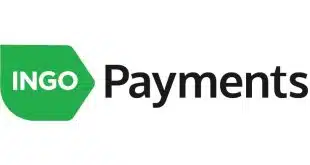Challenged in the past year, merchants are readying for major point-of-sale hardware and software upgrades to adapt to new consumer expectations.
Some merchants have had to delay much-needed point-of-sale system upgrades. Others are adding them to stay afloat in the immediate moment. And still others are incorporating make-shift steps to match changing consumer behavior in the past year. Whatever the case may be, many merchants are preparing to make improvements to their payment systems.
As a result, 2021 could be the year many POS system installations catch up to ways that consumers want to pay and interact with merchants. From reducing the number of times consumers must touch a payment terminal to the demand for online options for ordering ahead, consumer payment behavior has transformed in the past year and does not appear ready to revert to pre-pandemic ways.
A recent Mastercard report suggests as much as 30% of the shift to digital payments is permanent. As consumers were prevented from shopping in person because of lockdowns or contamination fears, they adopted online shopping at increasing rates. This cohort included consumer segments not used to online shopping. Or they wanted to tap a contactless card or smart phone against the POS device instead of touching yet another shared object.
Merchants have been paying attention. Thirty percent of them, as surveyed by Retail Consulting Partners for its 2021 POS & Customer Engagement Survey Report released earlier this year, intend to replace their POS software this year, up from 19% in the 2020 edition of the report. Another 22% will replace their POS hardware in the next 12 months, the same as in 2020.
“The major factors influencing hardware procurement and retirement mix at retailers are the shift to cloud-based POS systems, the ability of mobile POS to enhance the customer experience and overall engagement, the enablement of extended aisle functionality as part of the mobile experience, and the increased number of buy online, pickup in store (BOPIS) and buy online, pickup at curb (BOPAC) [programs],” says Ryan Grogman, a managing partner at Boston-based RCP.
“Many retailers addressed the needs of the pandemic … through quick fixes and manual processes,” he says. “As a result, retailers will be looking to untangle some of those short-term solutions that were put in place to support omnichannel in the past couple of years by implementing solutions the right way.”
‘Almost Cataclysmic’
There are two main drivers for the interest in POS software updates. One is the shift to enabling omnichannel commerce (for example, a restaurant that had no online-ordering function, but needs one now). The other is the pressure on retailers to address immediate needs stemming from the pandemic, such as mobile payments or BOPAC, Grogman says. “Retailers have continued their journeys towards transactions between their digital storefronts and physical locations for the past several years, fueled by consumer expectations around flexible channel ordering, fulfillment, and returns,” he says.
Modern POS systems are designed with these expectations in mind. “As a result, retailers wanting to deliver on these promises face a decision of trying to extend their current POS through customizations and upgrades, or moving to a new POS replacement. Up from 41% last year, 52% of retailers have indicated replacing their POS is a top priority in 2021,” Grogman says.
POS system upgrades are always in the works for some retailers, but a couple of factors are influencing 2021 plans, says Alex Barrotti, founder and chief executive at TouchBistro, a Toronto-based cloud POS system provider.
“We’ve seen two things,” says Barrotti. “Some customers used the time they have been closed to take care of cosmetic updates or they were looking for upgrades to their digital hospitality solutions. Suddenly, things that were never important became more important.”
The need for a POS system connected to third-party delivery providers, for example, rocketed in value, he says, adding, “all of these connections suddenly became the only way to survive.”
Though Barrotti a year ago had no idea what 2020 might mean for his business, expectations were set for little client investment amid the uncertainty. That is not what happened. Clients made investments in POS software and hardware. “We are doing far better than expected,” Barrotti says.
Indeed, when lockdowns went into effect, forcing TouchBistro and its clients to shift to remote work, the outlook was not good, almost cataclysmic. “Instead, that did not happen,” Barrotti says. “We ended up growing for the year. That happened because we pivoted very quickly to offer our customers the ability to offer online ordering, digital reservations, and new software products to reach the diner in new and different ways.”
Merchants, particularly the hospitality segment, were prompted to evaluate their POS systems to see if they support modern features, Barrotti says. Apps that enable consumers to use their own smart phones or other Internet-connected devices to order and pay are in demand, he says.
“This trend will continue,” he says. “Now, we, the consumer, want the flexibility to use [our] own device to order and pay for meals, whether it’s at home or in the venue.”
Room to Breathe
A similar observation comes from Chris Lybeer, chief strategy and marketing officer at San Francisco-based Revel Systems Inc. Estimates are that between 10% and 15% of restaurants and smaller retailers closed because of the pandemic, he says. “The flipside of that, which I don’t think anybody anticipated last year, [is that], once the shock wore off from the first few months, those who had capital to survive, they quickly realized they needed to do things differently,” Lybeer says.
“Whenever an industry goes through a downturn, the strong survive and the weak will go away,” he says. “The strong are saying they have to do better and differently than before.”
To that end, some merchants made upgrades last year, he says. Others made changes to get by for now. In 2021, more merchants will make hardware and software upgrades because they have a little more room to breathe, Lybeer says. Those with stopgap measures in place will look to adopt technology platforms that will take them into the future, he says. Revel had some clients roll out its POS system last year, but Lybeer suggests that 2021 and the following 18 months will be very active with installations.
Merchants will be looking for ways to adapt to digital consumer channels, such as online ordering, and to gain more ownership of their customers, he says. Many restaurants, for example, relied on third-party delivery services, but that came at a cost in fees.
“That saved them in the short term,” Lybeer says. “Now they have to figure out how to take their own customers back. They have to build a relationship with you. They can’t have their customers order through a middleman.”
‘The Next Challenge’
Such integrations will be top priorities, RCP’s Grogman says. “We expect a significant portion of retailers’ 2021 technology spending to be focused on integrating or expanding a seamless integration between POS and order-management capabilities, which are the center of a true omnichannel, ship anywhere, any time experience.”
That’ll mean, on the hardware side, reductions in demand for in-store and central servers for the point of sale. The RCP survey found that 22% of retailers use a POS system that is at least partially cloud-based and 29% indicate their next POS system will be cloud-based, Grogman says.
POS system providers are certainly gearing up for a busy 2021 and 2022, but one thought lingers. “What I hope is the restaurants don’t get amnesia six months after the pandemic,” says Revel’s Lybeer. “They need to be more prepared for the next challenge.”





